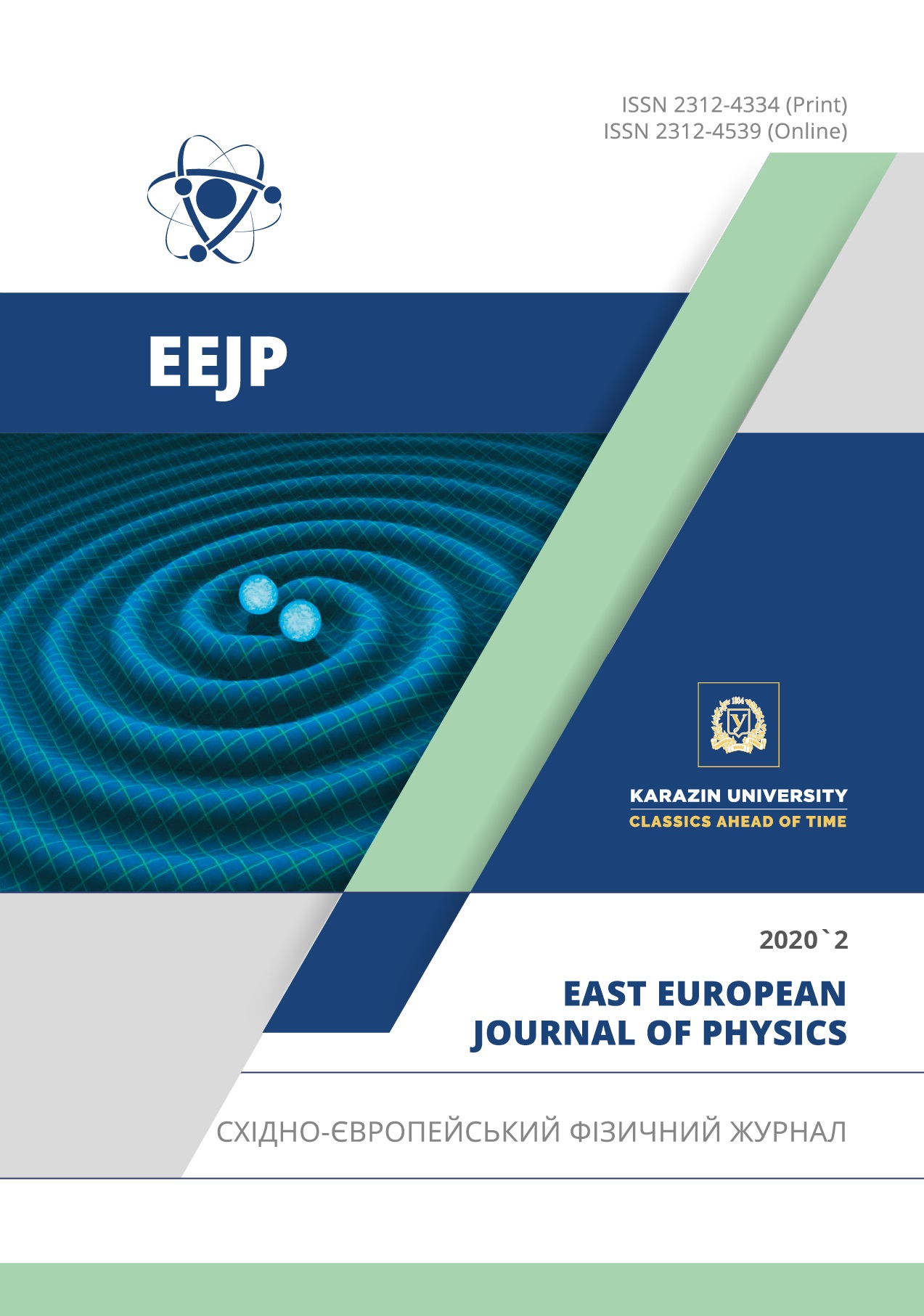Визначення ізотопних співвідношень 234U/238U, 235U/238U, 236U/238U в оксиді урану методом мас-спектрометрії з подвійним фокусуванням (ICP-SFMS)
Анотація
Досліджено вплив ефектів дискримінація іонів по масах, ізобарних і поліатомних інтерференцій на результати вимірювань ізотопних співвідношень , , в оксиді урану методом мас-спектрометрії з подвійним фокусуванням. Для проведення досліджень використовували сертифіковані ізотопні стандарти на основі октаоксіда тріурана () CRM U100, CRM U200 і одноколлекторний мас-спектрометр ICP-SFMS ELEMENT 2. Показано, що основним ефектом, що впливає на результати визначення ізотопних співвідношень урану, є дискримінація іонів по масах. Для вивчення впливу ефекту дискримінації іонів по масах на результати визначення ізотопних співвідношень урану, застосовували спосіб зовнішнього стандарту з трьома моделями (лінійної, степеневої та експоненціальної) залежності питомого коефіцієнта дискримінації від мас вимірюваних ізотопів. Розрахований коефіцієнт ступеня дискримінації для лінійної, степеневої та експоненціальної моделей залежності питомого коефіцієнта дискримінації від мас ізотопів варіюється від 6,00 ´ 10-3 до 1,20 ´ 10-2. Обґрунтовано перевагу використання степеневої або експоненційної моделей залежності для коригування ізотопних співвідношень, що вимірюються. При виникненні поліатомних інтерференцій ефективність утворення іонів гідриду урану () становить 3,54 ´ 10-5, а величина ефекту ізобарних накладень внаслідок вкладу розсіяних іонів в інтенсивності менш розпросторених і – 8,17 ´ 10-6. Проаналізовано метрологічні характеристики аналітичних результатів, зокрема, відносна похибка вимірювань ізотопних співвідношень , склала < 0,5 %, а для співвідношення – менше 0,1 %. Розрахована стандартна невизначеність вимірювань ізотопних співвідношень в стандарті CRM U100 склала 0,563; 0,322 і 0,856% відповідно, що виглядає задовільно в порівнянні з величинами невизначеності сертифікованих значень: 0,296; 0,097 і 0,265%.
Завантаження
Посилання
V.A. Kalashnikov, Synopsis of Ph.D. dissertation, Federal State Unitary Enterprise Ural Electromechanical Plant, 2006. (in Russian)
G.V. Shishalova, M.A. Kulakova, and E.E. Varlashova, Analytics and Control. 7(2), 186-189 (2003) (in Russian)
A.V. Saprygin, V.M. Golik, А.А. Makarov, B.G. Dzhavayev, and V.N. Kudryavtsev, Standard Samples. 2, 39-48 (2007). (in Russian)
I.T. Platzner, Modern isotope ratio mass-spectrometry. (Chichester, Wiley, 1997), pp. 83-108.
A.V. Saprygin, B.G. Dzhavayev, and А.А. Makarov, Analytics and Control. 7(1), 68-73 (2003). (in Russian)
A.V. Saprygin, B.G. Dzhavayev, and А.А. Makarov, Analytics and Control. 7(1), 64-67 (2003). (in Russian)
S. Lapshin, O. Proshenkina, Equipment and materials. 3, 28-36 (2012). (in Russian)
A.V. Khoroshilov, E.L. Silakova, and P.I. Ivanov, Advances in Chemistry and Chemical Technology, 29(6), 56-58 (2015). (in Russian)
A.N. Baranova, in: Материалы Конференции «Современные Проблемы Геохимии» [Materials of the Conference “Contemporary Issues of Geochemistry”] (Irkutsk, Russia, 2011), pp. 84-86. (in Russian)
M. Zoriy, L. Halicz, M. Ketterer, C. Pickhardt, P. Ostapczuk, and J. Becker, J. Anal. At. Spectrom. 19, 362-367 (2004).
A.Yu. Leikin, and P.V. Yakimovich, Journal of Analytical Chemistry, 67(8), 752-762 (2012). (in Russian)
А.А. Pupyshev, and B.A. Sermyagin, Дискриминация ионов по массе при изотопном анализе методом масс-спектрометрии с индуктивно-связанной плазмой [Ion mass discrimination in the isotope analysis by the method of inductively coupled plasma mass spectrometry] (Ural State Technical University, Yekaterinburg, Russia, 2006), pp. 16-68. (in Russian)
V.A. Stebel’kov, O.V. Erokhin, N.R. Stankov, and A.I. Yermakov, Mass-Spectrometry. 1(3), 221-230 (2004). (in Russian)
Авторське право (c) 2020 Д.В. Кутній, Д.Д. Бурдейний, С.О. Ванжа, Н.В. Рудь

Цю роботу ліцензовано за Міжнародня ліцензія Creative Commons Attribution 4.0.
Автори, які публікуються у цьому журналі, погоджуються з наступними умовами:
- Автори залишають за собою право на авторство своєї роботи та передають журналу право першої публікації цієї роботи на умовах ліцензії Creative Commons Attribution License, котра дозволяє іншим особам вільно розповсюджувати опубліковану роботу з обов'язковим посиланням на авторів оригінальної роботи та першу публікацію роботи у цьому журналі.
- Автори мають право укладати самостійні додаткові угоди щодо неексклюзивного розповсюдження роботи у тому вигляді, в якому вона була опублікована цим журналом (наприклад, розміщувати роботу в електронному сховищі установи або публікувати у складі монографії), за умови збереження посилання на першу публікацію роботи у цьому журналі.
- Політика журналу дозволяє і заохочує розміщення авторами в мережі Інтернет (наприклад, у сховищах установ або на особистих веб-сайтах) рукопису роботи, як до подання цього рукопису до редакції, так і під час його редакційного опрацювання, оскільки це сприяє виникненню продуктивної наукової дискусії та позитивно позначається на оперативності та динаміці цитування опублікованої роботи (див. The Effect of Open Access).








